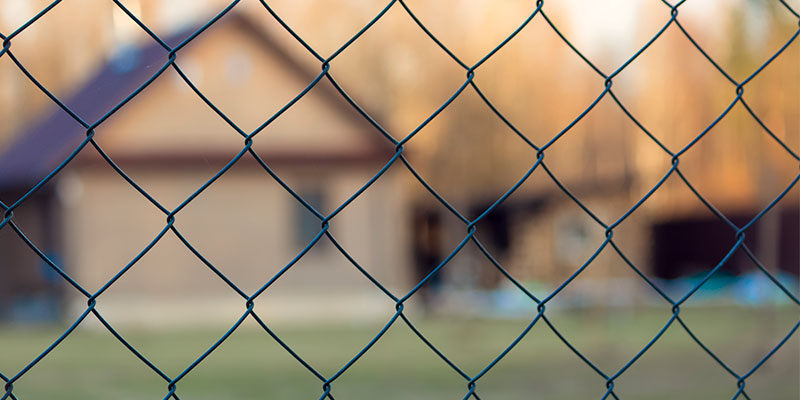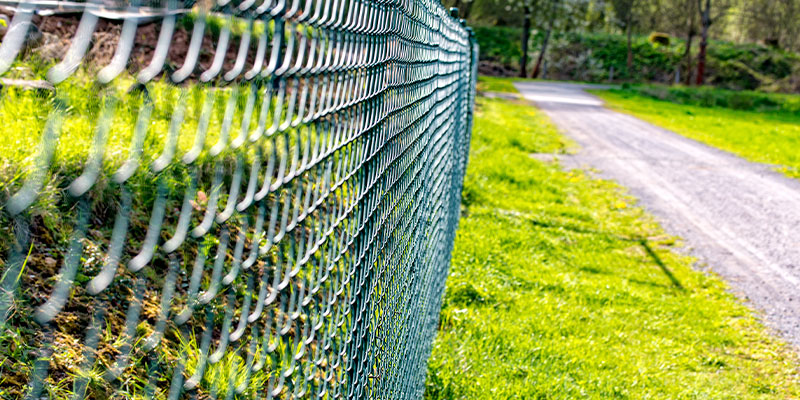
Updated June 15, 2023
Chain link fencing may be made of durable metal, but that doesn't mean it's the longest lasting fence option out there, and it certainly doesn't add value to your home.
The two biggest downsides to chain link fences are the fact that they're not aesthetically pleasing and they're not as durable as some of the more modern options available. Over time, chain link fencing rusts, warps, and can even pose safety risks—on top of being a general eyesore—and when this happens, it's time to remove and/or replace the fence.
Removing an old, failing, or just unsightly chain link fence can instantly improve your property's curb appeal and overall value, but you're likely wondering how to get the job done.
In this guide, we'll break down the process of chain link fence removal, who to hire to get the job done, and more.
Jump to:
Find fence removal services near you
Chain Link Fence Removal Process
Removing a chain link fence is not over-complicated, but it does involve a number of steps. Here is a breakdown of the chain link fence removal process...
Step 1: Clear Surrounding Plants
The first step of fence removal is clearing any plants or vegetation blocking the area that could be damaged in the fence removal process. Any plants that can be saved should be dug up and set aside to be re-planted later. If you have vines climbing your chain link fencing, this is especially necessary.
Use a trimmer to cut grass close to the fence and pull any weeds from the area. This will make it easier for your fence removal company to tackle the job. You will also need enough space on one side of the fence to lay it down once it has been removed in order to roll it up for disposal.
Step 2: Remove Clamps
Now that the surrounding area is cleared of tall grass, weeds, or plants, the actual fence removal can begin.
First, the clamps are removed from one of the corner or end posts one end at a time. The fence is typically attached to the fence post using brackets secured with a nut and bolt. That bolt needs to be loosened and then the bracket can be removed. If there is a tension bar running vertically along the edge of the fence, it needs to be weaved out of the chain links and set aside.
Step 2: Cut Fence Ties and Detach the Chain Link
Next, the wire fence ties or metal strapping that holds the chain link fence to the top rail will need to be cut. A small sharp bolt cutter or wire cutter is typically used for this. The ties don't need to be fully removed, they can usually just bend the wire ties back. Cutting the fence ties will result in lots of sharp metal points, which is why we recommend letting a professional handle your fence removal.
A long fence section is usually removed in sections so that it is more manageable during disposal. In general, the fence should be cut every 20 feet or less to keep the sections small enough to work with. At the end of the section, the chain link is cut down vertically, the top rail slides out of the top of the chain link fence, and the fence can then be rolled up.
At the corner or end, if a cap is attached to the top rail, it's removed by removing the nut and bolt holding them in place. Once the cap is removed, the rail can be twisted apart. If your fence has a welded railing, it will need to be cut into manageable sections. A reciprocating saw fitted with a metal-cutting blade or a hacksaw can help cut a long railing into manageable sections.
Step 3: Remove the Fence Posts
Once all the chain link fencing and the top railing is removed, all that's left are the fence posts. These are often set in concrete and can be difficult to remove. To remove the posts, wetting the ground surrounding the concrete can help loosen the dirt and make digging easier.
Then using a shovel and manpower, the concrete footing and post are worked out of the ground. If the concrete is large or set too firmly in the ground, a chain and a bumper jack can be used to help remove it.
Step 4: Dispose of the Debris
Once your fence is removed, it will need to be properly disposed of. Oftentimes, chain link can be salvaged and recycled or sold as scrap metal. When reaching out to fence removal contractors, ask them if disposal is included in the cost of fence removal.
If they don't, you will need to rent a dumpster, hire junk haulers to remove it for you, or haul the fence to the scrap facility or other recycling center yourself.
Learn more:
How to Find the Best Fence Removal Service

While removing a chain link fence is not particularly complicated, it takes quite a bit of strength, experience, and equipment to remove a fence (not to mention time), especially posts set in concrete. Not to mention, cutting a chain link fence creates sharp and dangerous edges and sharp metal shrapnel if not cautious.
Because of this, we strongly recommend hiring a professional to remove your chain link fence. Professional fence removal is safer, more efficient, and more likely to have a positive effect on your home value.
Hometown is a great resource to use when looking for the best fence removal pros in your area. We make it easy to request quotes from multiple contractors, learn more about each company, and read customer reviews.
Find out more:
- DIY Fence Removal vs Hiring a Pro to Remove Your Fence
- Fence Removal Cost Guide: How Much It Costs to Tear Down a Fence
- How to Be Sure You’re Hiring the Best Contractor


